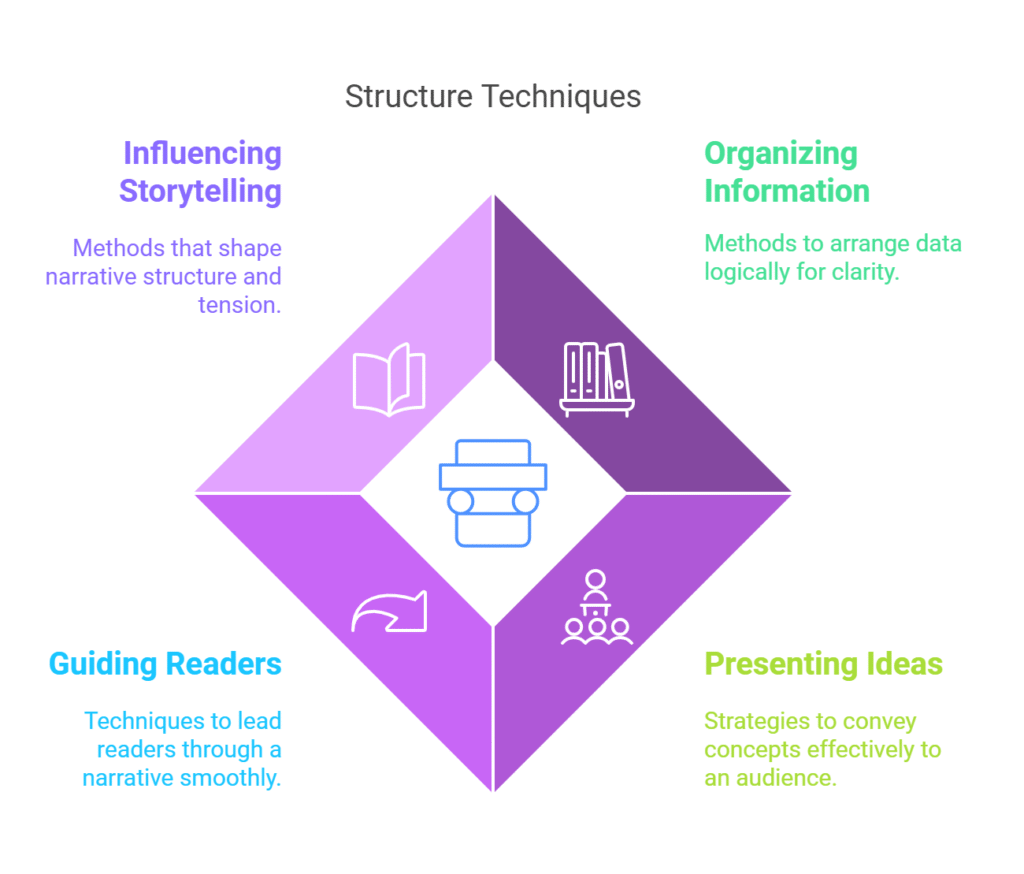Language and Structure Techniques
Structure techniques refer to the methods and strategies used to organise and present information in a cohesive and logical manner. These techniques are especially prominent in writing, literature, and communication, where they help guide the reader or listener through ideas effectively. In literature, structure techniques shape how a story unfolds, build tension, and reveal themes. For instance, a chronological order presents events as they happen, while a flashback disrupts the timeline to add context or backstory.
Outside of literature, structure techniques are just as useful in academic writing, presentations, and even everyday conversations. They help ensure your message is clear and easy to follow, which is essential for strong communication in GCSE English and beyond.

Why Are Structure Techniques Important?
Structure techniques play several key roles, highlighting their undeniable importance:
- Clarity and Organisation: A well-structured piece of writing or communication, therefore, is easier to understand. Moreover, structure techniques organise ideas logically, making it simpler for the audience to grasp the core message.
- Engagement and Interest: Proper structuring is essential because it keeps readers or listeners engaged. For example, techniques like cliffhangers or circular narratives not only captivate an audience but also ensure they remain invested in the content throughout.
- Purposeful Storytelling: In literature, structure techniques influence how a narrative is perceived. For example, starting in media res (in the middle of the action) can immediately capture attention, while a chronological approach builds the story step by step.
- Exam and Academic Success: For students, understanding structure techniques is crucial for exams and coursework. Moreover, analysing how texts are structured and, in turn, applying these techniques in essays demonstrates advanced skills. Consequently, this can lead to higher marks.
- Real-World Communication: Structure techniques are not confined to writing; moreover, they are vital in speeches, presentations, and even daily interactions. Additionally, a clear and logical presentation of ideas ensures your audience remains attentive and thoroughly comprehends your points.
| Structural Technique | Definition | Purpose | Effect on the Reader |
|---|---|---|---|
| Openings | The beginning of a prose text that sets the mood, tone, setting, introduces characters, and establishes the narrative voice. | To engage the reader’s interest from the outset. | Captures attention and provides context for the narrative. |
| Endings | The conclusion of a prose text that brings the narrative to a resolution or conclusion, providing closure and insight into character development. | To provide a satisfying conclusion and resolve the narrative arc. | Leaves the reader with a sense of completion or contemplation. |
| Foreshadowing | Hints or suggestions of future events or developments within a narrative through subtle clues. | To build anticipation and prepare the reader for what’s to come. | Creates suspense and engages the reader’s predictive instincts. |
| Juxtaposition | The deliberate placement of two contrasting elements in close proximity to highlight their differences. | To emphasise contrasts and enhance thematic depth. | Provokes thought and highlights significant differences or conflicts. |
| Linear Narrative | A narrative structure where events are presented in chronological order, following a straightforward sequence from beginning to end. | To provide clarity and straightforward progression. | Allows the reader to follow the story easily and understand cause-and-effect relationships. |
